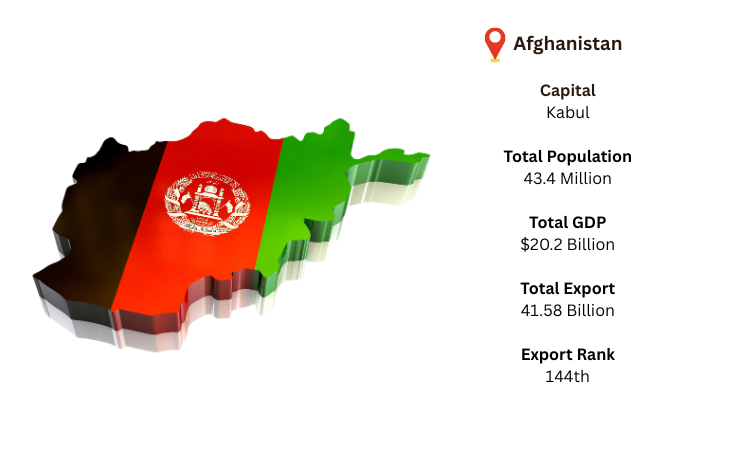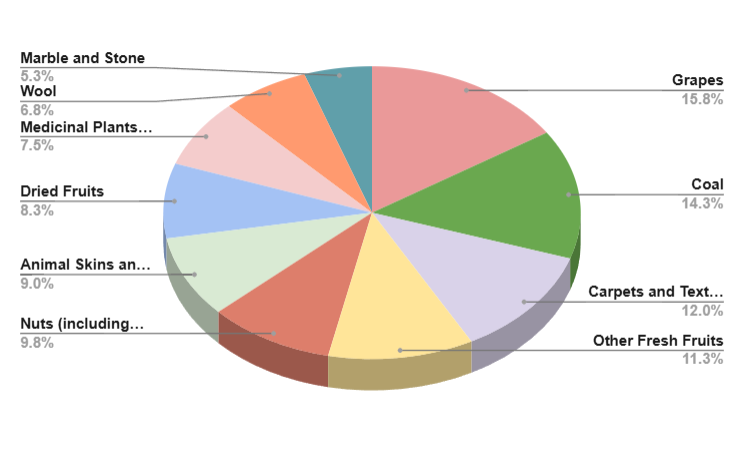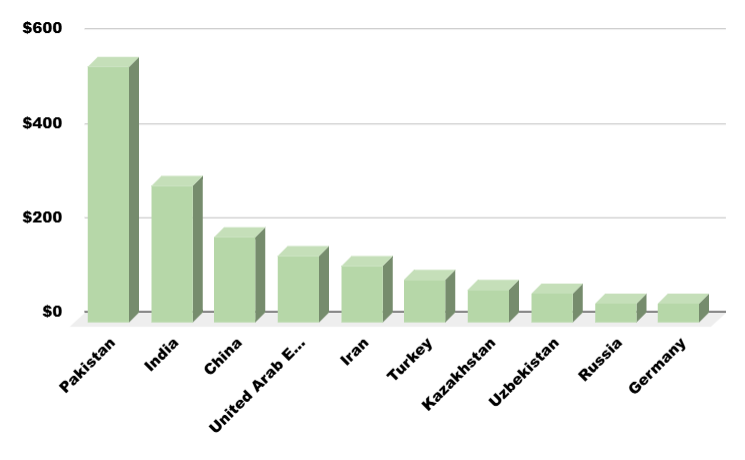China, Iran, Pakistan, Turkmenistan, Uzbekistan, and Tajikistan are the countries that border Afghanistan, a landlocked nation in South-Central Asia. Kabul is its largest city and capital. Afghanistan's GDP is projected to reach USD 20.2 billion in 2024. Based on worldwide export data, Afghanistan is the 144th-largest exporter in the world. Pakistan, which regularly supplies a sizable amount of Afghanistan's overall exports, is the country that imports the most Afghan items. As per Afghanistan export data, Afghanistan's overall export value is expected to reach USD 1.58 billion in 2024. Out of all the items that Afghanistan exports, grapes are the most popular.
The main drivers of Afghanistan's economy are exports from mining and agriculture. The nation nevertheless trades internationally, mostly with its neighbors, despite persistent political and economic unrest. Afghanistan can increase its export base with the correct infrastructure and policy assistance because of its advantageous geographic location and easy access to several borders.



